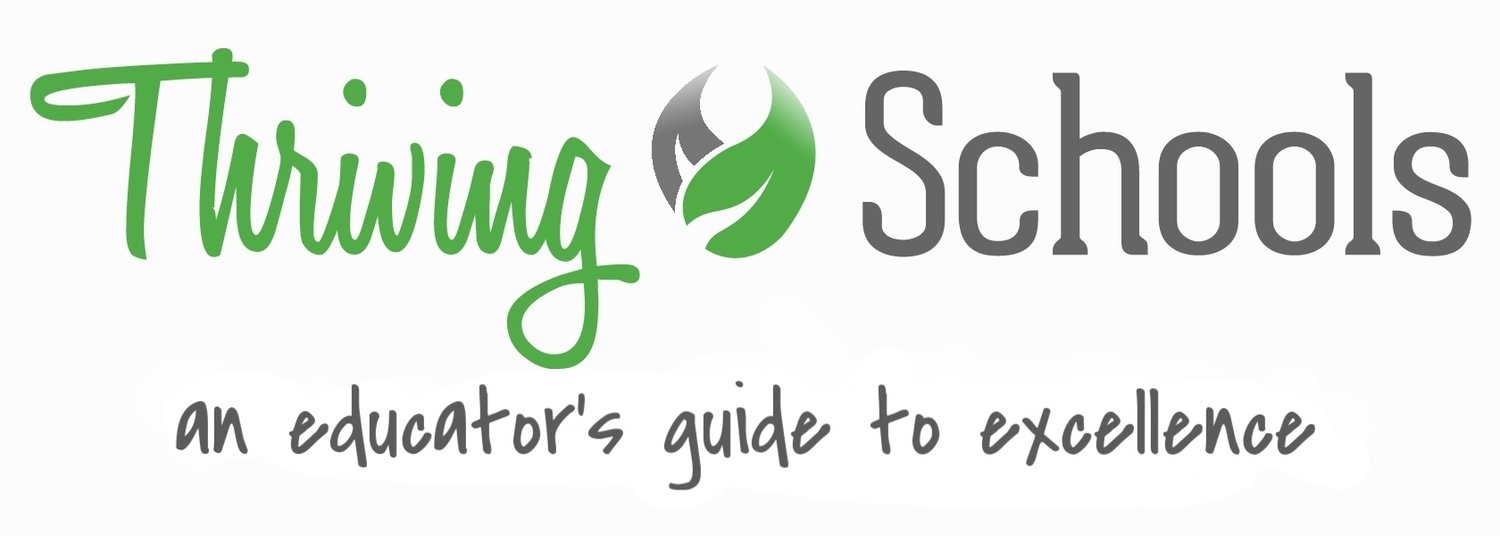Developing teacher motivation, Part 1
/We’re using this holiday break as an opportunity to reflect on school culture. This post is the first in a three-part series discussing the findings of Primed to Perform, a book that develops a framework for understanding motivation in the workplace. In this series, we will examine the book’s conclusions within the context of teacher morale.
What motivates your teachers? Why do some work harder than others and achieve miraculous outcomes? How can you improve school climate to foster even higher levels of enthusiasm?
These are the same questions the book Primed to Perform set out to answer about a wide-range of businesses and work cultures. In answering them, the authors created a framework for understanding employee motivation and measuring it. What they found is there are three sources of positive motivation and three sources of negative motivation. As we’ll be referring to these frequently throughout the series, it’s important to make sure we clearly understand their definitions.
Starting with the positives:
1) Play - The single largest source of positive motivation for employees in a thriving work culture is a sense of play. The authors define this as completing a task simply because one has fun doing it. Now some school leaders might hear this and think “we need more teambuilding activities” or “let’s take another staff fieldtrip.” But that’s precisely the wrong takeaway. “Play at work should not be confused with your people playing Ping-Pong or foosball in the break room. For your people to feel play at work, the motive must be fueled by the work itself, not the distraction.”
2) Purpose – The second most important source of motivation is a sense of purpose. The authors define it as valuing the result of the activity or work you engage in. In other words, “You may or may not enjoy the work you do, but you value its impact.”
3) Potential – The third source of positive motivation for employees is potential. This is defined as completing work because one values where the path leads. Put another way, “You do the work because it will eventually lead to something you believe is important.” Examples of the potential motive include gaining work experience or striving for a promotion.
The three sources of negative motivation are:
1) Emotional Pressure – This occurs when emotions such as distress, blame, or embarrassment force us to perform an activity or complete a task a certain way. When you feel compelled to complete work because of emotional pressure, the results will inevitably suffer.
2) Economic Pressure – Fair warning: this is the most difficult force to understand. Quite simply, economic pressure is doing an activity to win a reward or avoid a loss, with no regard to the purpose of the underlying work. Traditional examples of economic pressure include gaming bonuses and incentives or working just hard enough to avoid being fired. The authors add, “If money is the sole reason you’re participating in an activity, it will typically diminish performance. If you’re participating for other reasons, money won’t cause a problem. This is why we need to understand all the motives together.”
3) Inertia – Inertia is the most destructive of the negative motives. Inertia can be thought of as completing work or doing a job simply because that’s the routine you’re stuck in. In fact, inertia is so harmful that those experiencing it often don’t remember the reason they started doing their job in the first place. Thus, individuals working from a place of inertia will produce the worst outcomes.
Based on the results of countless survey responses across numerous industries, the authors go on to determine the relative importance of each of these motivators. “Play is about 2 times more powerful than purpose, which is about 3 times more powerful than potential. Inertia is about 2 times more damaging than economic pressure, which is about 3 times more damaging than emotional pressure.” That’s a lot to keep track of so here’s a chart to keep it all straight:
The next item we want to consider about the motivators is when they work and when they don’t. The authors cite research that shows using negative motivators only increases performance when a job is rote and requires completing simple tasks or easy-to-follow procedures. On the other hand, when work requires one to be adaptive, dynamic, and creative, negative motivators significantly decrease performance. As an example, putting financial incentives in place (a form of economic pressure and a negative motivator) will serve as a distraction from work when the task requires making challenging decisions. The key takeaway is that as work increases in complexity, an employer should strive to increase the positive motivators and dampen the negative ones.
To conclude part 1, let’s consider this framework in the context of our schools.
We argue that effective teaching is highly complex and requires an ability to constantly modify instruction to meet students’ needs. Based on the findings we just shared, we can conclude that the use of negative pressure is counterproductive when trying to motivate teachers. However, what we see time and time again are schools, districts, and governments enacting policies that do the exact opposite of what we know works. What are the logical consequences of pressuring educators to teach to the test and basing performance reviews on the outcomes? Well, we should expect a diminished sense of play (because teacher creativity is being suppressed) and an increased sense of emotional pressure (because of the blame-games that inevitably take place when outcomes fall short of expectations). Likewise, offering financial incentives that are only dependent on student test scores increases economic pressure while simultaneously crowding out a sense of purpose. It could also be argued that traditional step-based pay schedules for teachers are largely inertia-promoting.
Next time, in part 2 of this series, we will look at the keys to building positive motivation and creating a culture of high performance in schools.


